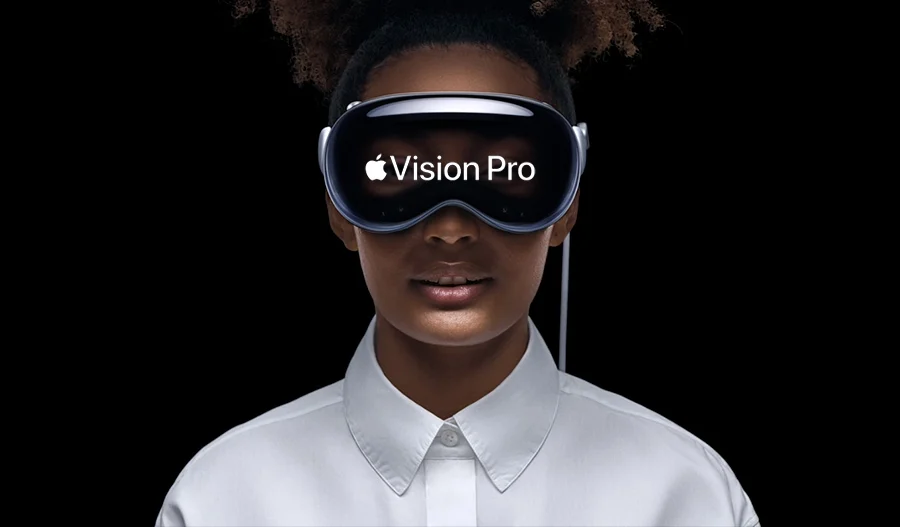
Apple Vision Pro 2 AR Unveils Groundbreaking AI Features
The Apple Vision Pro 2 AR is here, and it’s not just an upgrade—it’s a complete reimagination of spatial computing. Apple introduced the headset earlier this week with a bold promise: to redefine how people move through physical and digital environments.
At the heart of the device is an AI-driven spatial navigation headset system. Unlike its predecessor, the Vision Pro 2 anticipates user movement, detects obstacles in real-time, and adjusts interface elements accordingly. It combines LIDAR, machine learning, and real-time data from over a dozen sensors.
From day one, Apple focused on making the headset a tech gadget and a lifestyle-enhancing tool. And for users like college student Serena Wu, the difference is clear. “With the Vision Pro 2, my virtual study environment feels alive. I can walk, gesture, and work without touching a screen,” she said.
Vision Pro 2 Features AI Navigation Like Never Before
The Vision Pro 2 features AI navigation that is smarter, faster, and more intuitive than anything Apple has built before. The AI engine adapts based on user behavior and environmental data and learns over time, making each use smarter than the last.
Using eye-tracking and spatial awareness, the headset predicts where a user is looking and places content naturally into their field of vision. If someone turns to speak or leans to look closer at an object, the system reacts in real-time.
This responsiveness goes beyond convenience. For the elderly or physically disabled, these adaptive features reduce the need for fine motor control. “For my father, who struggles with Parkinson’s, the headset lets him interact without buttons or remotes,” shared Ada Obeng, a caregiver in Accra. “He uses it for therapy, news, and even chess.”
AI-Driven Spatial Navigation Headset Gets Real-World Praise
Experts have praised the AI-driven spatial navigation headset for opening up new possibilities across multiple industries. In healthcare, it’s being tested in surgical simulations, and in aviation, flight schools use it for cockpit walkthroughs.
Even small businesses are finding uses. A Lagos-based architecture firm uses the Apple Vision Pro 2 AR headset to present 3D building models to clients. “We walk them through unbuilt homes—virtually. It saves weeks of meetings,” said Tunde Okafor, lead architect.
Apple designed the new AI model to handle high complexity with low latency. It performs spatial calculations up to 10 times faster than the first Vision Pro, allowing for immersive AR without lag or disorientation.
Design Upgrades Enhance User Comfort and Immersion
Beyond software, the Apple Vision Pro 2 AR introduces a slimmer, lighter design. Apple cut the weight by 20% using carbon fiber and redesigned straps for better balance. The new lenses offer broader field-of-view and improved depth clarity.
These physical upgrades complement the AI-driven spatial navigation headset features. The headset adapts visuals based on lighting and user position, keeping the experience fluid during movement.
For Aliyah, a dance choreographer in Casablanca, this mattered. “With the first Vision Pro, I got dizzy when spinning or turning. Now, I choreograph entire routines in mixed reality. It’s smooth like I’m dancing through light.”
Such feedback proves Apple’s intent to merge tech with real human movement, emotion, and intention.
Apple Vision Pro 2 AR in Classrooms and Remote Learning
The Apple Vision Pro 2 AR is changing how lessons are delivered in education. Classrooms from Nairobi to Berlin are experimenting with immersive history, biology, and coding courses.
The AI-driven spatial navigation headset allows students to explore virtual environments like the Roman Empire or the human bloodstream. Teachers use it to create adaptive lesson paths, and students who struggle with a topic receive visual hints and simpler tasks in real-time.
Emeka Obi, a teacher in Abuja, shared his experience: “My students don’t just read about molecules—they walk among them. And the AI adjusts lessons based on how well they engage.”
This people-centered use of technology makes the Vision Pro 2 more than a luxury—it’s a learning partner.
A Boost for Mental Wellness and Personal Growth
The headset also supports personal growth and mental wellness. Apple partnered with health platforms to launch mindfulness apps that use the AI-driven spatial navigation headset to guide users through meditative experiences.
Environments adapt to breathing pace, posture, and voice tone. Virtual landscapes shift colors and sounds to reduce anxiety and aid focus.
For young adults battling digital burnout, the headset is a refreshing alternative. “I work in front of a screen all day,” said James Osei, a graphic designer in Accra. “But using Vision Pro 2 for meditation feels like stepping outside—even indoors.”
What Comes Next for the Apple Vision Pro 2 AR
With the success of the Apple Vision Pro 2 AR, Apple plans to expand accessibility. A more affordable version could arrive in 2026. There are also talks about partnerships with airlines, retail stores, and car manufacturers.
The AI-driven spatial navigation headset will likely receive more localized experiences. Apple’s developers are creating city-specific overlays that provide guided walking tours, shopping directions, and event recommendations in real-time AR.
Early adopters are just beginning to uncover what the headset can do. However, the message is clear: Apple wants to turn mixed reality into everyday reality, and this starts with a human-centered design.
Conclusion: Vision Pro 2 Features AI Navigation That Thinks Ahead
The line between technology and life blurs as Apple reshapes the future with the Apple Vision Pro 2 AR. Powered by an AI-driven spatial navigation headset, the device doesn’t just respond—it thinks, adapts, and evolves with its user.
This launch isn’t just about innovation—it’s about people—people like Serena studying better, Aliyah choreographing in new spaces, or James finding peace in a virtual landscape.
With the Vision Pro 2’s AI navigation features built to understand us better than ever, Apple may have just given the world its smartest companion yet—one that lives on your face but walks through your world.



